Horizon: An American Saga Review | Fine Film, Poor Release Strategy
In This Article
- Welcome to San Pedro Valley, Arizona, 1859
- The Film Does Not Downplay the Dangers the New Settlers Face
- Meet the Cast of Horizon: An American Saga, if You Can Remember Them All
- The Cast Is a Movie Director’s Dream
- Costner Plays a Man With Few Words
- Why Horizon: An American Saga Chapter One Failed at the Box Office
- In What Ways Did Horizon: An American Saga – Part One Succeed?
- What’s next for Horizon: An American Saga?
by Garry Murdock
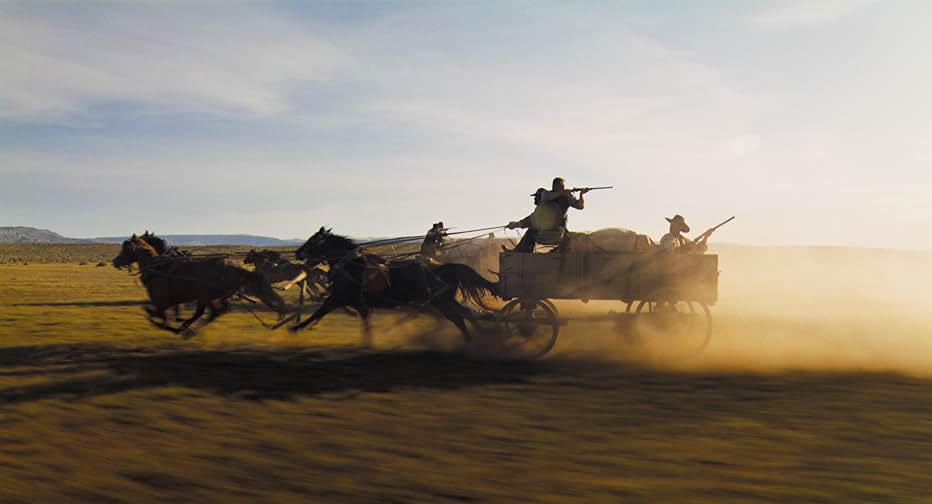
(Horizon)
The poster promises a lot: “Horizon. Premium Virgin Land. The Best Grazing Land in the World. Pure and Abundant Water.” What did those early pioneers and their families imagine, reading this? The characters in Horizon: An American Saga – Chapter One likely envisioned a new beginning, a chance to carve out a fulfilling life, and a future filled with endless possibilities.
The poster makes no mention of the hardships that come with the dream. Those who attempt to make the trek to Horizon will face unforgiving elements (the brutal sun, the epic rainstorms), a lack of water, deadly snakes and scorpions. And of course, the Indians—who have good reason to be distrustful of the white man. But who could resist the allure of a fresh start?
Welcome to San Pedro Valley, Arizona, 1859
The film begins as a beautiful day is unfolding. We watch as a small group of surveyors put survey stakes in the ground and take measurements. Among them is a young boy helping his father. Curious Apache Indians are seen watching from a distance, hidden behind rocks.
Some time passes. We see a lone traveler on a horse. He too is looking for a new start in Horizon. He has just come to the realization that the town hasn’t been built yet when he stumbles across these same surveyors. Only now, they’re all dead (when he finds the body of the boy, I gasped out loud). He doesn’t know the deceased, but he takes the day and gives the bodies a proper burial and prayer. He knows, and we know, from the feathers left behind, that the Apache have acted. We also get the feeling that this is only the beginning.
The men who hunt this land, they are not going to share it with you. What you build, they will burn down.”
This is not your average Kevin Costner western, not at all. It has very little in common with Dances with Wolves or Open Range (films he also directed) or Wyatt Earp, Silverado and the Hatfields & McCoys. This is because Horizon: An American Saga is much, much darker than his previous films. And, as we are about to see, it will get a whole lot darker.
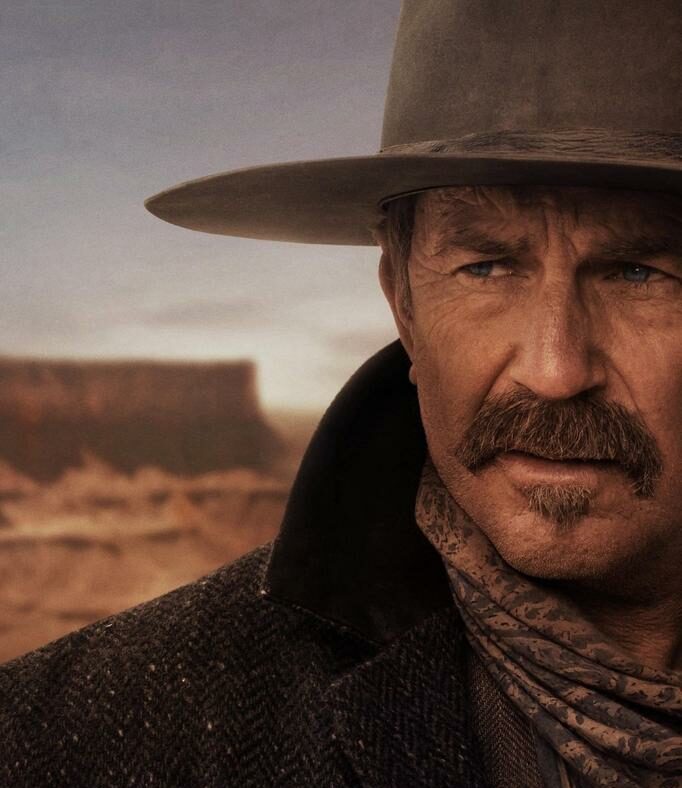
The Film Does Not Downplay the Dangers the New Settlers Face
Minutes later we watch a massacre unfold as the Apache attempt to butcher an entire settlement. The United States calvary will arrive too late. A sympathetic lieutenant, Trent Gephart (Sam Worthington), surveys the carnage from atop his horse. He is thoughtful with his words, and tells the survivors: “The men who hunt this land, they are not going to share it with you. What you build, they will burn down.”
Surprisingly, even with Gephart’s offer of an armed escort to the nearest fort, some of the survivors want to stay. They want to rebuild, to try again. And some want revenge.
Gephart reminds them that there is a lot more Indians out there than the small division of Apache responsible for the attack; there’s also the Pima, the Hopi, and the Yuma. Many are peaceful. It would be difficult, he tells them, to find the exact group of Apache they are looking for. But apparently each Indian scalp brings a fairly large monetary reward. So, as one angry survivor points out, who cares which tribe they’re from?
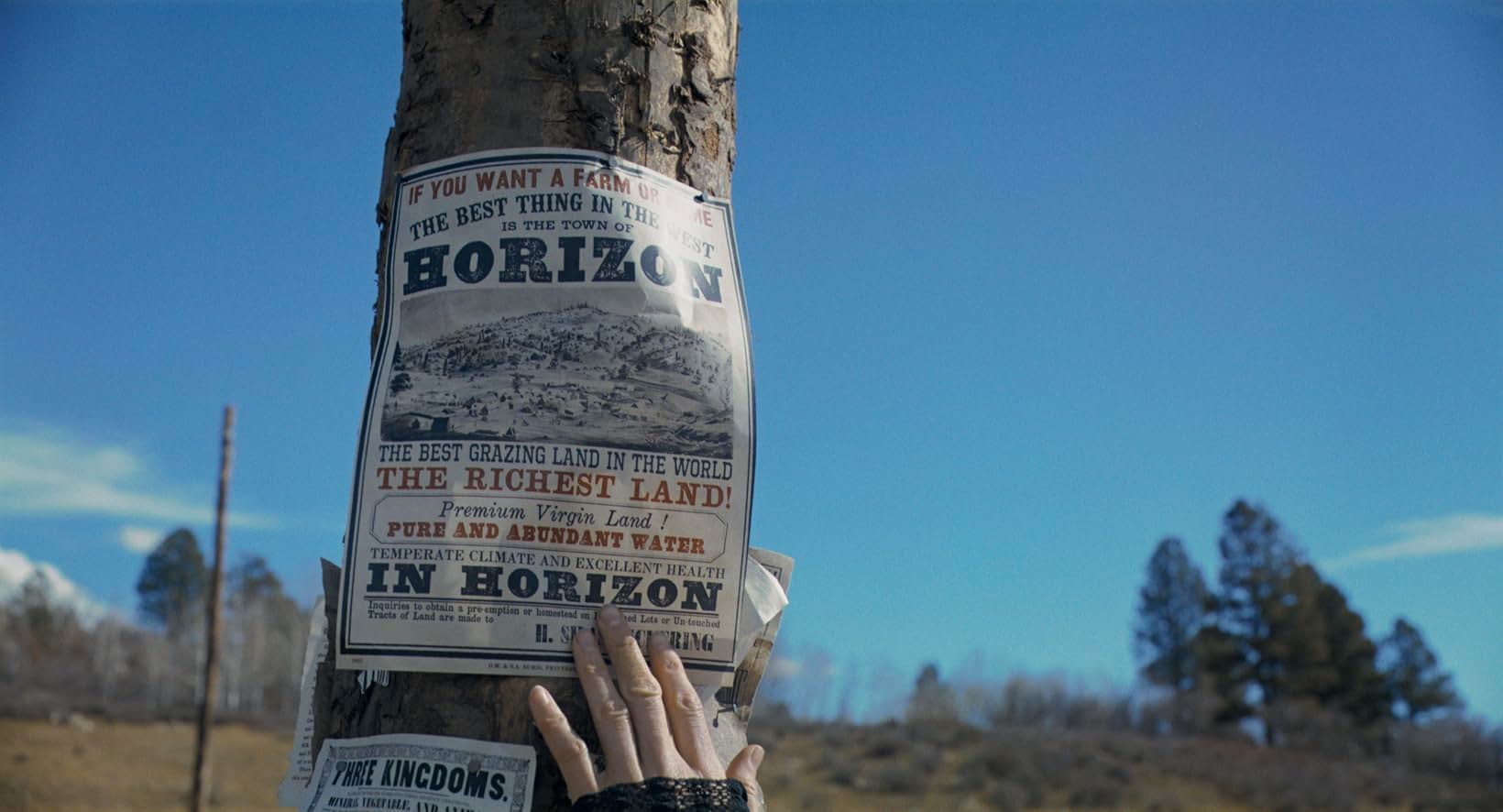
HORIZON
Meet the Cast of Horizon: An American Saga, if You Can Remember Them All
Horizon has a lot characters. We meet Frances (Sienna Miller) and her daughter Elizabeth (Georgia MacPhail)—the survivors of the Apache attack who are suffering from the loss of two family members. We meet Marigold (Abbey Lee), a lady of the night who is suddenly burdened by the responsibility of a child not her own.
There’s also the Sykes boys—the terrifying and so brutally violent Caleb (Jamie Campbell Bower), and Junior (Jon Beavers), his smoother, calmer, thinking brother. They have been searching relentlessly for their sister, but their motives are far from pure. And there’s Luke Wilson as Matthew Van Weyden, leading a caravan to Horizon and bearing all the responsibility that comes with it.
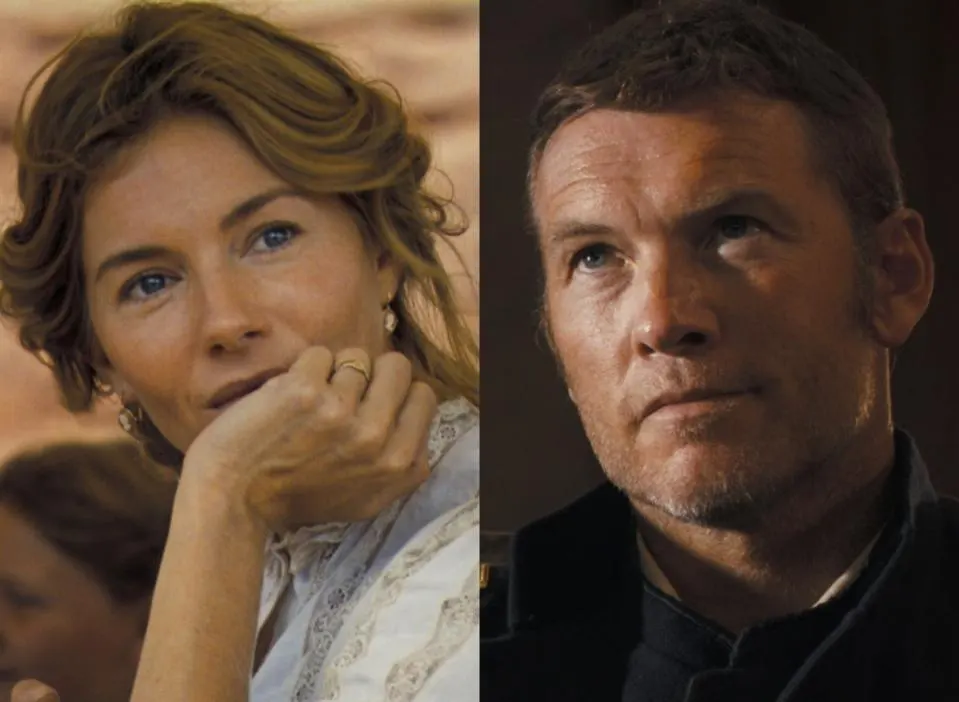
HORIZON
The Cast Is a Movie Director’s Dream
We also meet Colonel Albert Houghton (Danny Huston) who, as calvary commander, will do what needs to be done. However, he is resigned to the fact that there will be more bloodshed. In a conversation with Gephart, he states calmly: “You and I are standing guard on one of the last great open spaces…there’s no army of this Earth that’s gonna stop those wagons coming, little as they’re wanted. Now, your Apache, he thinks if he can salt the Earth with enough of our dead, that he’ll stop those wagons coming. Spoil the place for us. But you study the newcomers. They’ll look out at ever so many graves and it won’t make the least difference.”
Costner Plays a Man With Few Words
One of the newcomers the Colonel is referring to is Hayes Ellison, played by Kevin Costner. Through no fault of his own, Ellison becomes involved in a shootout with Caleb that ends tragically. Suddenly Ellison and Marigold are on the run.
There’s also…well, too many other characters and story arcs to explain. Which is a shame because these extra roles are filled with top-drawer talent such as Giovanni Ribisi, Michael Rooker, Will Patton, James Russo, and Jeff Fahey. Ribisi is only seen briefly at the end of Chapter One, in a montage of shots to promote the next three films. His character, and many more (along with their stories), have yet to be introduced.
HORIZON
Why Horizon: An American Saga Chapter One Failed at the Box Office
For starters, there’s too many characters. This is a good movie. Perhaps it would have been a better (maybe even great) made-for-TV mini-series. As a miniseries, the audience would have had different expectations. They know it’s going to take time to learn about all the characters, their backstories, etc., and they’re prepared to do that. They want to do that. They can simply take their time and watch at their leisure.
Horizon Could Have Worked as a Stand-Alone Film
Conversely, this could have been a decent stand-alone movie. Ellison’s story by itself could have been enough, but of course the word “saga” would have to be removed from the title.
The Marketing Wasn’t Honest with Us
What’s unexplainable (although I’ll try to explain it here) is that the film was originally advertised as being two chapters. The original trailer told us that Chapter One would release on June 28, and Chapter Two on August 16. The problem? It is, unbelievably, four chapters.
I guess that feels like a dishonest marketing campaign. If you saw the first trailer and the end title card stated: “Chapter One—June 28, Chapter Two—August 16, Chapter Three—2025” and “Chapter Four—2026”…maybe you figured you’d wait for the whole series to be available on a streaming subscription service. That way you could binge watch it on a lazy Sunday afternoon.
Horizon Didn’t Recoup its Costs
As it turns out, due to poor ticket sales (Chapter One made only $29 million in North America vs the film’s $100 million budget), Horizon is already out on digital for purchase. Chapter Two’s release has been delayed indefinitely. There’s talk that Chapter Two will still get a theatrical release after more people have had the chance to discover Chapter One. However, it would not surprise me at all if the three remaining chapters go directly to streaming.
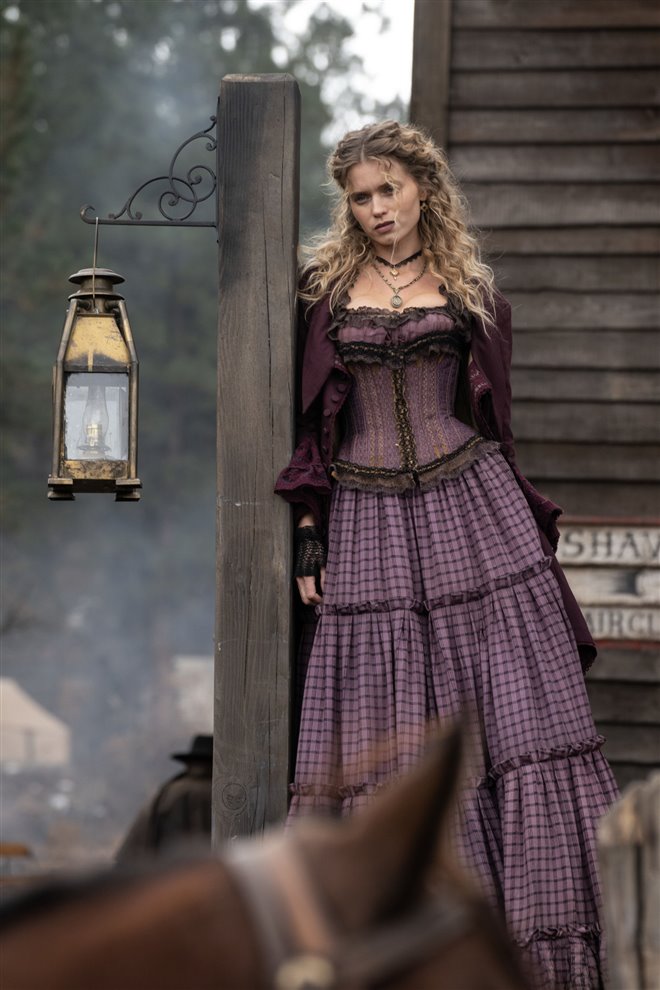
HORIZON
We May Need to Watch Them Over and Over Again
Here’s another problem with the studio’s strategy: have you ever anticipated a second season to a Netflix series, only to realize you forgot most of what happened in season one? Maybe you had to go back and watch key parts of season one over again, or even whole episodes?
I feel this is an identical situation. By the time we get to Chapter Two, I might have to revisit Chapter One just to refresh my memory. At just under three hours in length, I feel that’s unlikely though. Maybe the same goes for Chapters Three and Four too, depending on when they’re released, and their respective lengths. So maybe this helps explain the studio’s reluctance to be up front with the amount of sequels in the trailer. Especially with the cost of movie tickets these days.
I think Costner was trying something new here; perhaps he figured he could get people back into theatres with an epic western (or four). The cinematography is gorgeous and meant for the big screen (it will win on the home theatre vs cinema argument every time). Had this been released pre-streaming, where movies were still an experience, an event, something to really look forward to, then maybe the strategy would have worked.
Titling a Movie “Chapter One” Doesn’t Make Audiences Want to See it
Let’s not forget the recent Mission: Impossible – Dead Reckoning Part One debacle. “Part One” has now been dropped from the title’s wording. It’s been decided that the words “Part Two” won’t be in the sequel’s name. So, maybe labelling something Part One or Chapter One is a turnoff for audiences. After all, the very notion of chapters means the loose ends won’t get tied up until the next movie (or the next, or even the next…), and in the case of Mission: Impossible, we won’t see the sequel to Dead Reckoning for almost another year.
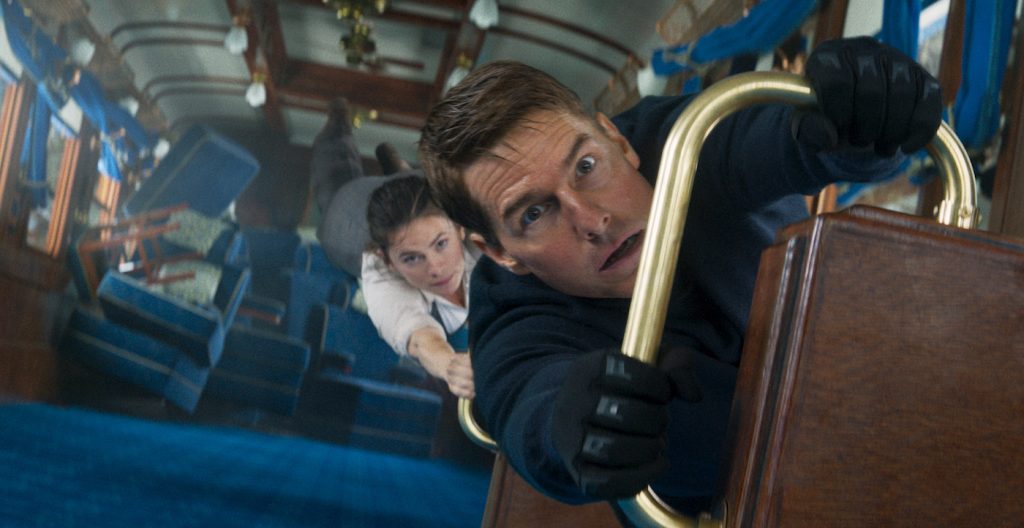
HORIZON
Sure, there have been many movies that have had a series of very successful sequels: Batman Begins, The Terminator, Spider-Man, Die Hard, X-Men, Rocky, and even the previous six Mission: Impossible films. The thing is each of those sequels work as stand-alone films. You know the characters, and you know the bad guy is going to get defeated before the end credits. You could watch these films in any order you want to.
Not so with Dead Reckoning or Horizon. You have to watch them in order. And you have to wait a long time for the next chapter.
There’s No Existing Fan Base
I suppose the Dune films (which you can read my review of here) could be an outlier, as titling them Part One and Part Two seemed to have had no impact on their enormous box office successes. However, their marketing plan was expansive and effective, and there was less story and characters to deal with. In addition, a fan base had been building for literally over half a century (Dune was published in 1965) who couldn’t wait to see a proper big-screen adaptation—we won’t discuss the 1984 attempt here.

RIZON
Costner Was Absent the Entire First Hour
Costner’s absence for the first hour of the movie had to have been a major letdown for fans. In addition, it’s sometimes hard to watch a movie when characters are introduced or part of a story is told, and then it’s another half hour before we get back to them again.
HORIZON
In What Ways Did Horizon: An American Saga – Part One Succeed?
As I have noted, Horizon is a dark, gritty, and violent film. However, I believe Costner has successfully captured the harsh realities of life in the Old West. Although its portrayal may be accurate, Horizon might not appeal to everyone. I’m sure many of us prefer the romanticized version of this exciting period in America’s history, complete with heroic gunfighters, sweeping musical scores, love stories, and happy endings.
While I appreciate those films too, Horizon’s unflinching portrayal of violence lends a raw authenticity to this time period that may make the eventual triumph of some of the characters resonate with the audience more profoundly. I say ‘may’ because it is important to realize that Chapter One is really a set-up for more to come.
The advantage of such a long film run time is that we get to know these characters very well; we believe in them, root for them, and care what happens to them. We want to see them achieve their dreams, no matter how much the odds seem against them succeeding.
HORIZON
What’s next for Horizon: An American Saga?
As of this writing, Chapter One is available to rent or purchase on digital and has already premiered on Crave. Chapter Two is ready for release and is in limbo while the studio decides what to do with it. Chapter Three of the saga is currently being shot. Money is being raised to produce Chapter Four.
I have no doubt that Chapter Four will be made. Costner invested $38 million of his own money into making Chapter One, and according to a Vanity Fair interview with Coster, there is no way the filmmaker is going to give up on this project now.
In due time, when all the sequels have been released, I suspect audiences may look at the Horizon saga a little differently. After all, the film’s story, directing, and performances are tremendous, and its stunning cinematography is just that—stunning. All those efforts, however, were overshadowed by its scope, and media reports of problems financing the movies. In any event, if the first film is any indication, Costner wanted to produce and direct something on an epic scale—and to give the man his credit—it looks like he is going to succeed.
about the writer
About the Writer
About the Writer



